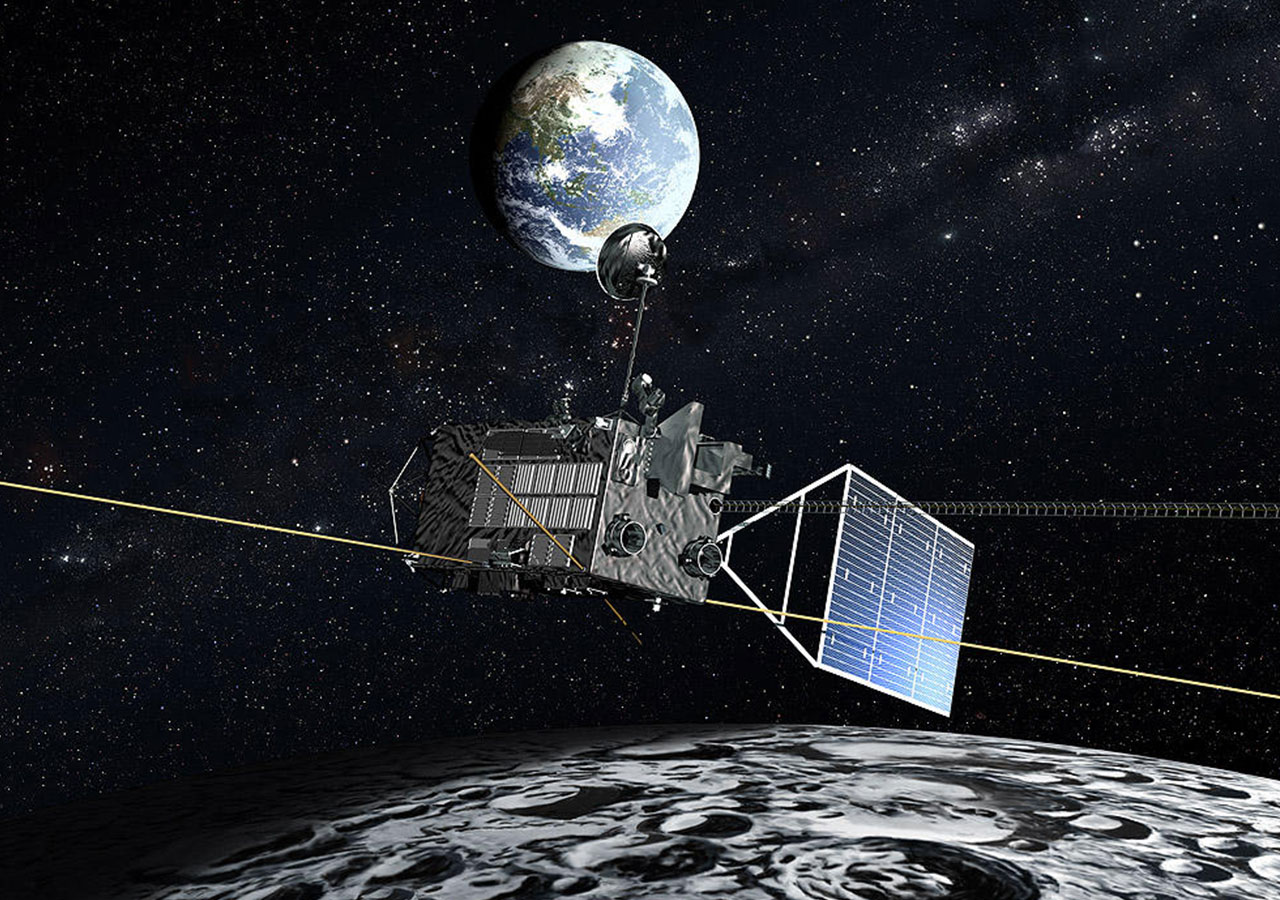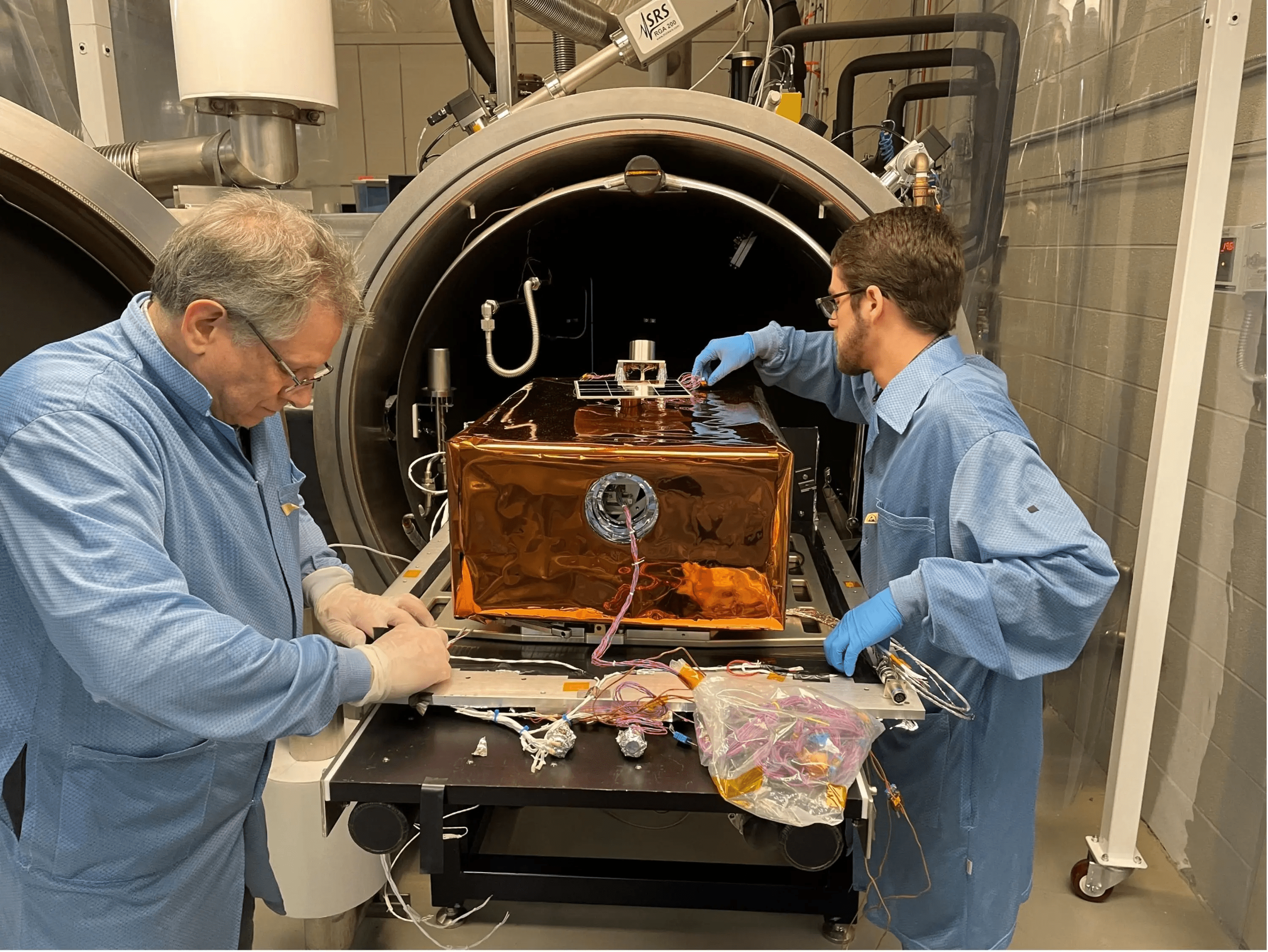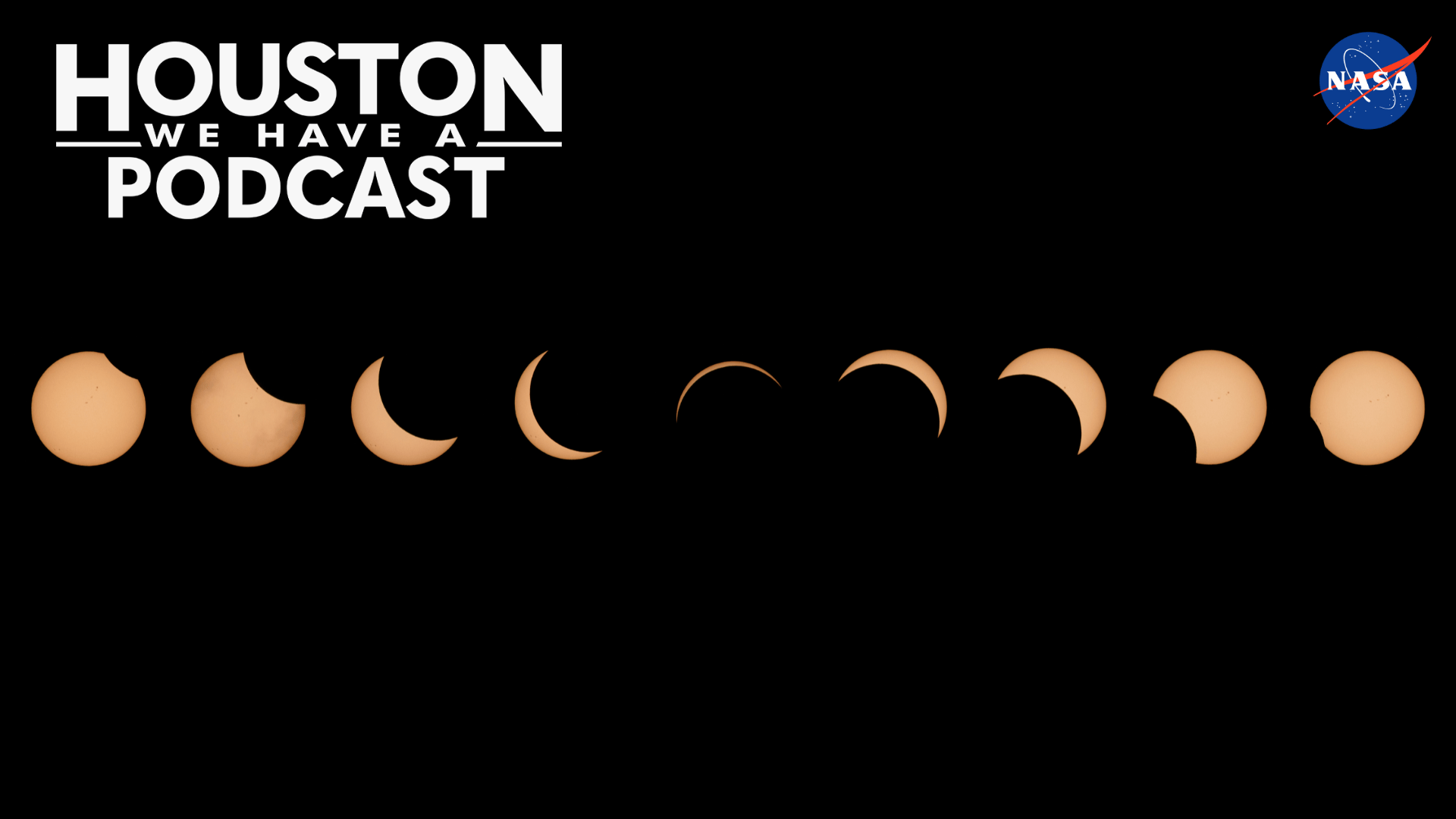Kaguya
Type
Launch
Target
Objective
Japan sent its second lunar orbiter, Kaguya, along with two mini-satellites to map the Moon's surface, gather data on its topography, geology, and gravity, and develop critical technologies for future lunar exploration.

What Was Kaguya?
Kaguya, originally named SELENE (Selenological and Engineering Explorer) was Japan's second mission to explore the Moon from orbit. Kaguya created the most detailed topographical model to date. The mission carried two small satellites: Okina and Ouna.
Nation | Japan |
Objective(s) | Lunar Orbit |
Spacecraft | SELENE / Okina (Rstar) / Ouna (Vstar) |
Spacecraft Mass | 6,393 pounds (2,900 kilograms) |
Mission Design and Management | Japan Aerospace Exploration Agency (JAXA) |
Launch Vehicle | H-IIA 2022 (no. 13) |
Launch Date and Time | Sept. 14, 2007 / 01:31:01 UT |
Launch Site | Tanegashima Space Center, Japan, Yoshinobu Launch Complex 1 |
Scientific Instruments | 1. X-ray Spectrometer (XRS) 2. Gamma-ray Spectrometer (GRS) 3. Multi-band Imager (MI) 4. Spectral Profiler (SP) 5. Terrain Camera (TC) 6. Lunar Radar Sounder (LRS) 7. Laser Altimeter (LALT) 8. Lunar Magnetometer (LMAG) 9. Charged Particle Spectrometer (CPS) 10. Plasma Energy Angle And Composition Experiment (PACE) 11. Radio Science Experiment (RS) 12. Upper Atmosphere And Plasma Imager (UPI) 13. Four-way Doppler Measurements By Relay Satellite And Main Orbiter Transponder (RSAT) 14. Differential VLBI Radio Source Experiment (VRAD) 15. High-definition Television (HDTV) |
In Depth: Kaguya
SELENE was renamed Kaguya, or Moon Princess, after launch as a result of a public poll.
The mission’s goal was to orbit the Moon to collect data on the origins and geological evolution of Earth’s only natural satellite, to study the lunar surface environment, and to carry out radio science experiments. The Japanese called it “the largest lunar mission since the Apollo program.”
In addition to the main orbiter, Kaguya, the mission included two small spin-stabilized sub-satellites, each weighing about 117 pounds (53 kilograms). These were the Relay Satellite (Rstar) and the VRAD satellite (Vstar). Upon launch, they were renamed Okina and Ouna, which mean “honorable elderly man” and “honorable elderly woman,” respectively.
Originally slated for launch in 2003 but delayed to 2007 due to problems with the H-II launch vehicle, the probe was launched into a highly elliptical parking orbit of about 175 x 144,800 miles (282 × 232,960 kilometers). On Oct. 3, 2007, Kaguya entered into an initial polar orbit around the Moon at about 65 x 7,300 miles (101 × 11,741 kilometers), the first time that a Japanese spacecraft had done so.
The two small satellites, Okina and Ouna, were released on Oct. 9 at 00:36 UT and Oct. 12 at 04:28 UT into corresponding orbits: about 70 x 1,500 miles (115 × 2,399 kilometers) and 80 x 500 miles (127 × 795 kilometers).
The orbiter itself attained its operational circular orbit at about 60 miles (100 kilometers) by Oct. 19.
On Oct. 31, Kaguya’s two main high-definition TV cameras, each a 2.2 megapixel CCD HDTV camera, took the first high-definition images of the Moon.
A week later on Nov. 7, the spacecraft took spectacular footage of an “Earthrise,” the first since the Apollo missions in the 1970s.
The fully operational phase of the mission began on Dec. 21, 2007, following a successful checkout of all the onboard instruments.
By April 9, 2008, JAXA announced that Kaguya, using its laser altimeter, had collected enough data to construct the topography of the entire lunar surface, with data points 10 orders larger than the previous model of the lunar surface. (The previous model was produced by the Unified Lunar Control Network in 2005, based largely on the American Clementine spacecraft.)
Kaguya’s other achievements included detecting gravity anomalies on both the near and the far side of the Moon (based on Doppler data from both Kaguya and the Okina satellite) and the first optical observation of the permanently shadowed interior of the Shackleton Crater.
Kaguya completed its original planned mission by late October 2008, with hopes to continue to March 2009 followed by impact in August 2009. However, because of a faulty reaction wheel, the extended mission ended early.
On Feb. 1, 2009, Kaguya’s orbit was lowered to approximately 31 miles (50 kilometers). The orbiter then impacted the Moon at 18:25 UT on June 10, 2009, at 65.5 degrees south latitude and 80.4 degrees east longitude near Gill Crater.
Okina had already impacted the Moon at 10:46 UT on Feb. 12, 2009.
Kaguya was named for Kaguya-hime (Princess Kaguya), a visitor to Earth from the Moon in a 10th century Japanese folk tale, "Taketori Monogatari" (The Tale of the Bamboo Cutter). The relay satellites, "Okina" and "Ouna," were named after the old man and woman who find and adopt Kaguya-hime.









